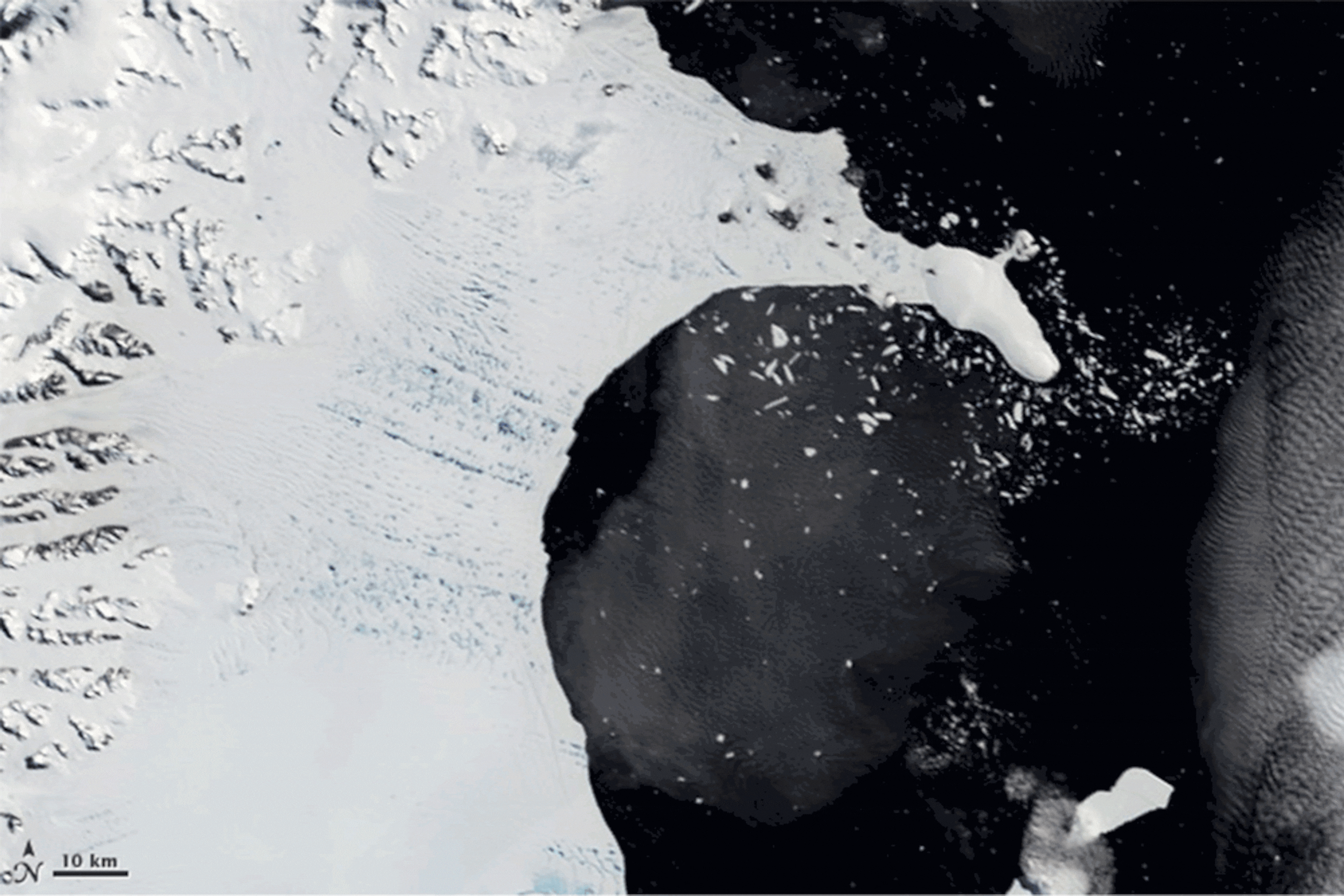
Climate Change Is Moving the North Pole
As ice melts and aquifers are drained, Earth's distribution of mass is changing—and with it the position of the planet's spin axis.
Finding the North Pole means traveling north, right? Yes, but with a slight caveat: Earth's northern pole is drifting rapidly eastward, and it looks like climate change is to blame. The discovery may have major implications for studies of ice loss and drought, potentially improving our ability to predict such changes in the future.
Earth turns around an axis like a giant spinning top. The places where that invisible axis intersects with the planet's surface are the north and south rotational poles. Due to Earth's wobble on its axis, these spots drift in roughly decade-long cycles. (All this motion is a completely separate mechanism from the behavior of the planet's magnetic poles, which also reverse periodically over the course of millions of years.)
Scientists pinpoint the geographic north and south poles by taking the long-term averages of those rotational positions.
Explorers and scientists have been reliably measuring the precise positions of the rotational poles since 1899, first by measuring the relative positions of the stars and then by using satellite telemetry. Over the past century or so, the poles have tended to wander by just a few centimeters a year.
"That may seem like a tiny variation, but there is very important information embedded in that," says Surendra Adhikari, an Earth scientist at NASA's Jet Propulsion Laboratory in California.
The north pole had shifted back and forth from east to west, with on overall trend that had it moving toward Canada. But since 2000, the pole's typical drift has "made a dramatic change," says Adhikari. Since that time, the pole has been moving steadily eastward by about 75 degrees, heading toward the Prime Meridian that runs through Greenwich, England.
This shift has been on the order of 10 centimeters a year, so it's probably not enough to warrant a recalculation of the planet's geographic pole--although later generations may have to consider it if things keep changing, notes Adhikari.
What's most exciting to the scientists is that they can now explain what's actually causing the drift, and that may have significant ramifications on climate science.
Ebb and Flow
For at least a decade, scientists have suspected that the massive amounts of melting taking place in glaciers around the world could significantly redistribute mass on Earth. That's particularly true when it comes to the huge ice sheets over Greenland and in the West Antarctic.
If ice disappears from one part of the spinning Earth and resettles elsewhere as water, the planet shifts on its axis toward the place where it lost mass.
But the physics are so complex that scientists could only guess at how this actually works in the real world. Now, Adhikari has proposed a way to explain the process. The secret was discovering that it's not just shrinking glaciers that change Earth's mass distribution, as some scientists had thought. A lot of mass also gets moved around due to large-scale loss of liquid water from the land, the team reports this week in Science Advances.
Adhikari and his colleague and co-author Erik Ivins think the rotational pole is shifting toward Europe because there has been a massive loss of water from lakes and aquifers in Eurasia, around the Caspian Sea, and in India. Warmer temperatures overall have led to more evaporation and less precipitation in many areas, and booming human populations have been sucking up groundwater from reservoirs and wells (watch Saudi Arabia get drained dry).
"What we have shown is that melting ice and a pattern of continental water storage are combining to cause a dramatic shift in the direction of the pole," says Adhikari.
Gavin Schmidt, a climate scientist with NASA's Goddard Institute for Space Studies in New York, commends the authors for adding to the discussion about climate science. Schmidt, who was not affiliated with the study, agrees that human activity has caused "detectable shifts in mass from ice sheet melt and groundwater extraction."
Pole Predictions
Adhikari and Ivins hope their findings will help other climate researchers improve our understanding of global forces.
"We should be able to use polar-motion data to answer some interesting questions," says Adhikari. The data could help make climate models more accurate, because scientists could work backwards from the robust archive on polar drift to infer the melting and evaporation rates of the past.
"We have much better data on the position of the poles than we do on melting glaciers through history," Adhikari notes.
Scientists might similarly be able to track how fast specific areas have dried out from drought. The end result could be more accurate predictions of changes in climate in the future, as well as a better understanding of how our planet spins through space.





